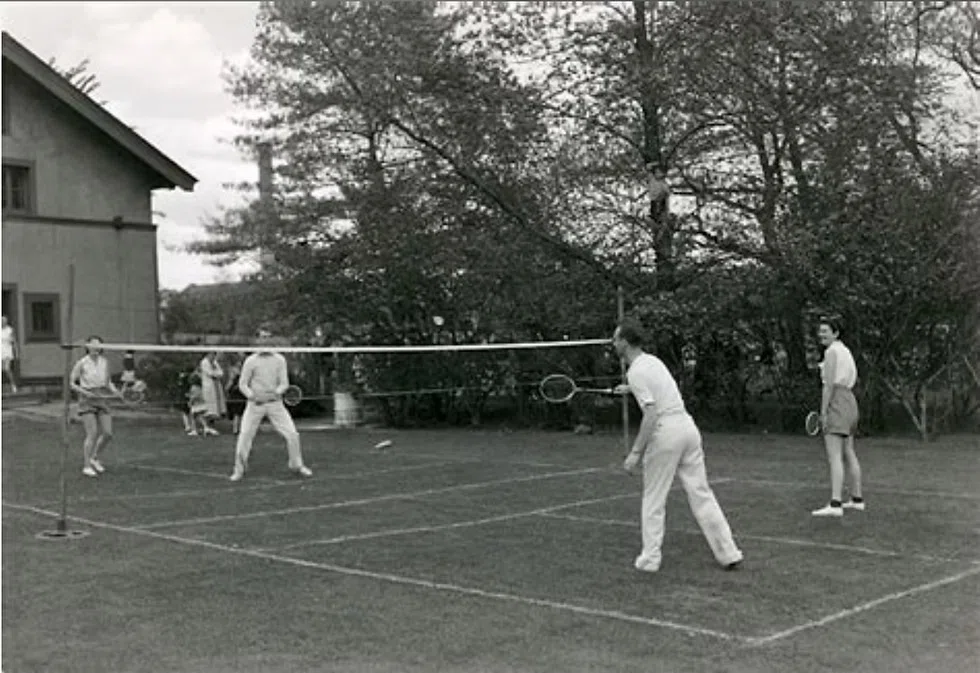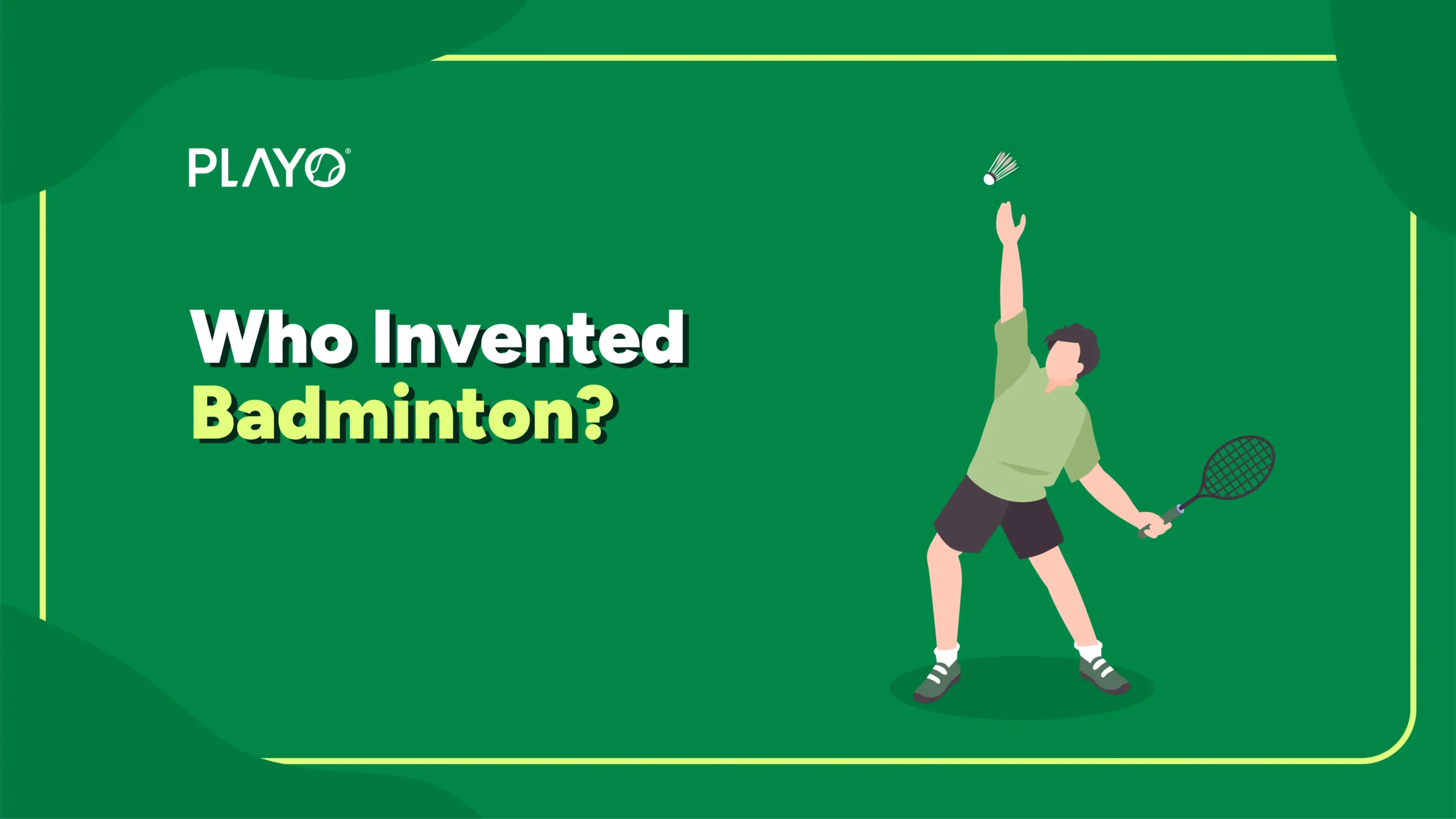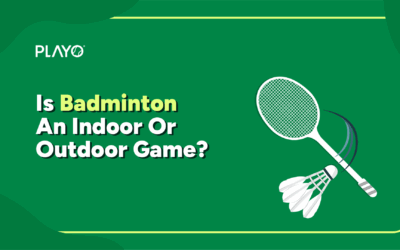Ever wondered who invented badminton? While many assume it to be a recent British creation, the history of badminton stretches back over 2,000 years across different civilisations. However, modern badminton as we know it was officially shaped by British army officers in colonial India during the 19th century, long after its ancient predecessors like Battledore and Shuttlecock spread through Greece, China, and India.
It’s also important to clarify that badminton is not the same as Ball Badminton, even though both originated from the Indian subcontinent. Badminton uses a feathered shuttlecock and a net on a rectangular court, while Ball Badminton uses a woollen ball and slightly different dimensions.
The Ancient Roots of Badminton
Badminton’s origins are deeply intertwined with the ancient games of Battledore and Shuttlecock, where players used simple paddles to keep a feathered shuttle in the air. Games of this nature were played in ancient Greece, China, Japan, and India, symbolising skill, agility, and hand-eye coordination.
Over centuries, the pastime evolved differently across cultures, but its modern form began taking shape in colonial India.
Birth of Modern Badminton: The Poona Legacy

During the mid-1800s, British army officers stationed in Poona (now Pune), India, started playing a local game called Poona. It closely resembled battledore and shuttlecock but was structured into a competitive format, with rackets, a shuttlecock, and a divided court.
When these officers returned to England, they introduced the game at the Badminton House in Gloucestershire, the Duke of Beaufort’s estate, around 1873. The game, then nicknamed “The Game of Badminton,” soon became a social sensation among Britain’s upper class. This estate is directly responsible for giving the sport its modern name, “badminton”.
Read More: What is Badminton?
Official Recognition and Governing Body of Badminton
Badminton’s growing popularity led to formalisation:
- 1877: The Bath Badminton Club was founded, which codified and published the first official rules of the sport.
- 1893: The Badminton Association of England was established, standardising play and organising the first championships.
- 1934: The International Badminton Federation (IBF) was formed with founding members such as Canada, Denmark, England, France, Ireland, the Netherlands, New Zealand, Scotland, and Wales. The IBF later became the Badminton World Federation (BWF).
- 1992: Badminton made its debut as an official sport at the Barcelona Olympics, marking its arrival as a true global competition.
These milestones reflect how British influence and organisation transformed an ancient pastime into a worldwide sport.
Who Invented the Badminton Racket?
The badminton racket, like the sport itself, did not have a single inventor. Its design evolved gradually from battledore paddles to refined, lightweight rackets engineered for speed and aerodynamics.
The Early Badminton Rackets
The earliest equipment, used for battledore and shuttlecock, was simple, solid wooden paddles made by hand. When the game transitioned into “Poona,” rackets began featuring wooden frames with gut strings (made from animal intestines), similar to early tennis rackets.
Evolution of Badminton Rackets through the Ages
As badminton spread to England, players and manufacturers improved upon the Indian versions:
- 19th century: Handmade wooden rackets with natural gut strings dominated the game.
- Mid-20th century: Introduction of steel and later aluminium frames improved racket durability and flexibility.
- Late 20th century: The rise of carbon fibre and graphite composite rackets revolutionised performance by combining lightweight balance with exceptional strength.
Modern advances by leading brands like Yonex, Carlton, and Victor have transformed racket design with features such as isometric heads, nanocarbon shafts, and aerodynamic grommets, enhancing both control and power.
Milestones in Badminton Racket Innovation
- Early 1900s: Traditional handcrafted rackets.
- 1950s–1970s: Aluminium and steel frames dominate.
- 1980s onward: Carbon fibre and titanium composites.
- 21st century: Smart rackets with balanced tension and vibration control.
Badminton racket technology continues to evolve, reinforcing the sport’s fast-paced, precision-driven style. Modern badminton rackets now feature advanced materials that enhance power, control, and durability.
Who Invented Ball Badminton?

Ball Badminton is a distinct Indian sport often confused with badminton. It is a different sport altogether, though it shares similar rules of rally scoring and racket play. Originating in 19th-century Tamil Nadu, this version was designed as an outdoor alternative during the Indian monsoon season, when feather shuttlecocks became unusable due to moisture.
Origins and Rules of Ball Badminton
The game uses a woollen ball instead of a shuttlecock and is played on a slightly smaller court than badminton, with distinct dimensions and rules. Historically, it was more accessible and popular across southern India before badminton gained international fame.
Key Developments of Ball Badminton
- Origin: Mid-19th-century Tamil Nadu, India
- Governing Body: Ball Badminton Federation of India, founded in 1954
- Purpose: To provide a weather-proof, outdoor racket sport suitable for Indian conditions
- Equipment: Woollen ball, bamboo or steel rackets
- Players: Typically five per side
Though less known globally, ball badminton played an essential role in shaping India’s rich racket-sport tradition.
Evolution of Badminton Equipment Over Time
Badminton’s evolution from battledore to a global sport highlights major milestones in badminton equipment evolution and badminton racket technology.
| Period | Event or Advancement | Description |
| 2000 BCE | Battledore & Shuttlecock | Played in ancient Asia (China, Greece, Japan) using simple paddles |
| 1800s | Poona (India) | British officers played an early version with rackets and a shuttle |
| 1873 | Badminton House (England) | First modern match played; the sport was named “Badminton” |
| 1893 | Badminton Association of England | Formalised rules and organised competitions |
| 1934 | Founding of IBF | First global governing body for badminton |
| 1970s–Present | Equipment innovations | Synthetic shuttlecocks, carbon fibre rackets, and global manufacturing |
Conclusion
Badminton’s history is the story of cultural blending, gradual evolution, and technological innovation. While no single inventor can be credited for creating badminton, its modern version emerged from ancient games and flourished through British formalisation.
From the ancient Battledore and Shuttlecock to the refined Olympic sport we see today, badminton represents centuries of global evolution. The development of its rackets, from wood to carbon fibre, transformed how athletes play, while Ball Badminton, born in India, showcased local innovation and adaptability.
Whether you admire its past or love its modern competitiveness, badminton continues to bridge tradition and innovation on every court.
Download Playo on Android or iOS, or visit playo.co to start playing!
Frequently Asked Questions
The modern sport of badminton was formalised by British army officers in India in the 19th century. Its origin traces back to Poona, which was later introduced in England at Badminton House in 1873.
Yes. Badminton is an excellent cardio sport that burns calories rapidly, tones muscles, and improves agility, making it effective for weight loss.
Choose rackets based on your level and playing style. Beginners benefit from lightweight rackets with flexible shafts, while advanced players prefer balanced, high-tension graphite or carbon fibre rackets for precision and power.
No. Ball Badminton is not an Olympic sport. It remains popular primarily in India and is governed by the Ball Badminton Federation of India.
A standard ball badminton woollen ball weighs between 30 to 35 grams.
Ball badminton is played by five players on each team on the court, with substitutes available.
Badminton uses a shuttlecock and is an Olympic sport played globally. Ball Badminton uses a woollen ball, originates from India, and is mostly played at the national level within the country.





0 Comments